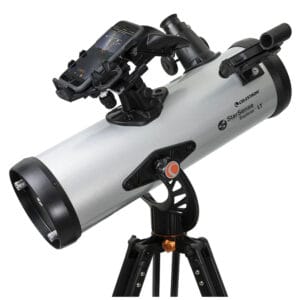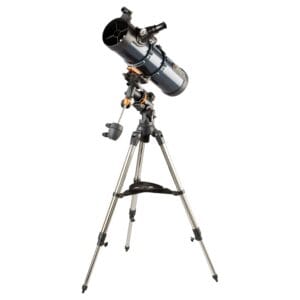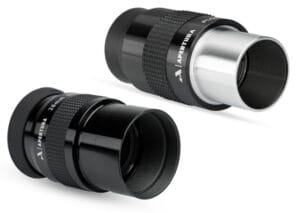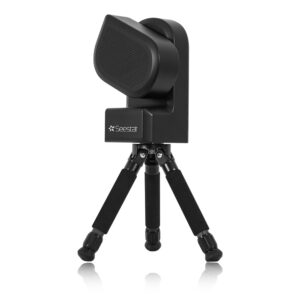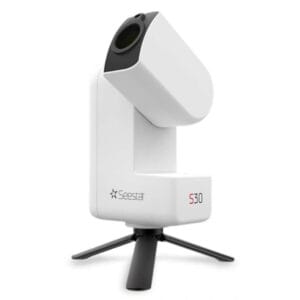Observing deep-sky objects is one of the most impressive experiences in amateur astronomy. These mysterious objects – such as galaxies, nebulae, and star clusters – are often millions of light-years away and show the immense scale of the universe. In this guide, you’ll discover how to successfully observe them, what equipment you need, and which objects are ideal for beginners.
What are Deep-Sky Objects?
Deep-sky objects (also known as DSOs) are astronomical structures outside our solar system. The most well-known categories are:
- Galaxies: such as the Andromeda Galaxy (M31), a spiral galaxy 2.5 million light-years away.
- Nebulae: clouds of gas and dust, such as the Orion Nebula (M42), where new stars are born.
- Star clusters: densely packed stars, both open (like the Pleiades, M45) and globular (like M13 in Hercules).
These objects often emit faint light, making them challenging to observe – but all the more satisfying when successful.
The Right Telescope for Deep-Sky Objects
1. Choose a Telescope with a Large Aperture
Light gathering is essential for deep-sky observation. A telescope with an aperture of at least 150 mm (6 inches) allows much more light through than smaller models. Reflector telescopes (such as Newtonians or Dobsonians) are popular due to their large aperture and affordability.
➤ Tip: check out our selection of Dobsonian telescopes or smart telescopes on our shop page.
2. Use Low Magnification
Large deep-sky objects like nebulae and galaxies require a wide field of view. Use eyepieces with a focal length of 25 mm or more. This makes it easier to capture the entire object without constant adjustments.
3. Smart Telescopes
Smart telescopes make observing deep-sky objects more accessible than ever, even for complete beginners. These telescopes combine high-quality optics with smart software, automatic alignment, and object recognition via an app.
Some popular models that are ideal for deep-sky observation:
- Seestar S50 – Fully automated, shows nebulae and galaxies in real-time via stacking. Perfect for beginners.
- DWARF 3 – Compact, with advanced sensor (IMX678) and EQ mode. Offers longer exposures without field rotation – ideal for deep-sky astrophotography.
- Vaonis Hestia – Works with your smartphone and Gravity by Vaonis app. No motors, but smart object recognition and stargazing capabilities with your phone.
Smart telescopes save you the complexity of manual aiming and focusing. They automatically find deep-sky objects like the Andromeda Galaxy or Orion Nebula and display them on your screen within seconds – even in moderate light pollution.
➤ Check out our range of smart telescopes
Best Location: Escape Light Pollution
Light pollution is the biggest enemy of deep-sky observations. Look for a location with minimal artificial light, preferably in a nature reserve or dark-sky park.
- Use a light pollution map (such as lightpollutionmap.info) to find dark spots in your region.
- Avoid bright flashlights and screens. Use a red flashlight to maintain your night vision.
- Wait for a New Moon for the best conditions: the lack of moonlight helps make faint objects more visible.
Top 3 Deep-Sky Objects for Beginners
When you’re just starting out, there are several spectacular objects that are relatively easy to find and see – even with a telescope under €300.
1. Orion Nebula (M42)
Visible to the naked eye in the constellation Orion. Even in small telescopes, this nebula shows structure and color. Particularly suitable for winter evenings.
2. Andromeda Galaxy (M31)
The nearest large galaxy, visible as a fuzzy patch. In telescopes, you can see the bright core and sometimes even spiral arms under good conditions.
3. The Pleiades (M45)
This open star cluster contains hundreds of young, blue stars. It looks like a miniature version of the Big Dipper and is beautiful even with binoculars.
Tips for Successful Observation
✅ Let your eyes adapt to the dark
Take at least 20-30 minutes without bright light to fully develop your night vision.
✅ Use a star map or app
Apps like Stellarium, SkySafari, or Star Walk 2 help you accurately locate deep-sky objects.
✅ Be patient and observe consciously
Scan the sky slowly. Sometimes it helps to look slightly to the side of the object (a technique called averted vision), as your eye is then more sensitive to faint light.
Conclusion: the Magic of Deep Space
Deep-sky objects reveal the majestic depth of the universe. Whether you’re fascinated by spiral galaxies, mystical nebulae, or sparkling star clusters, there’s always something new to discover.
With a good telescope, a dark sky, and some patience, you can embark on your own journey to the farthest corners of the universe.
➤ Want to learn more about telescopes? Check out our guide: Which telescope is right for you?
➤ Start your deep-sky adventure with a powerful beginner telescope at telescoop.nl.


